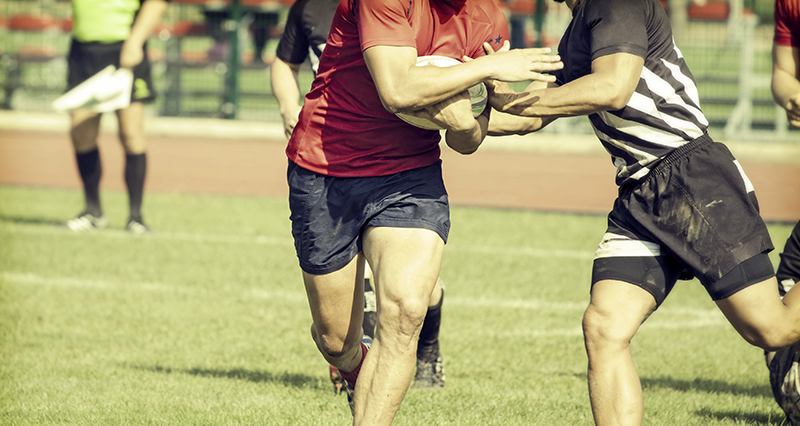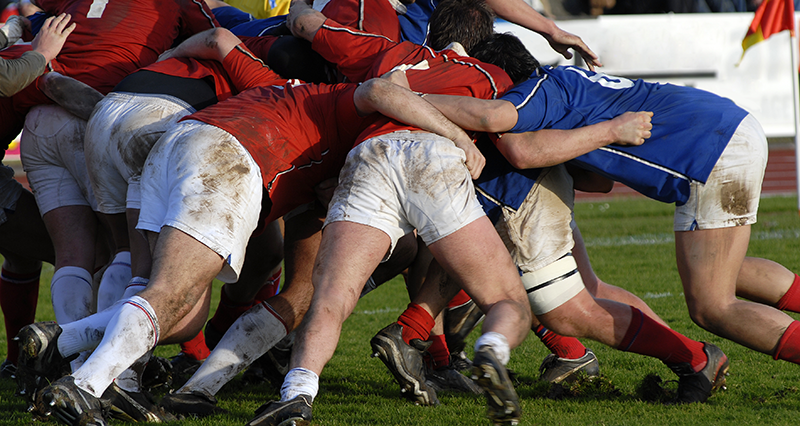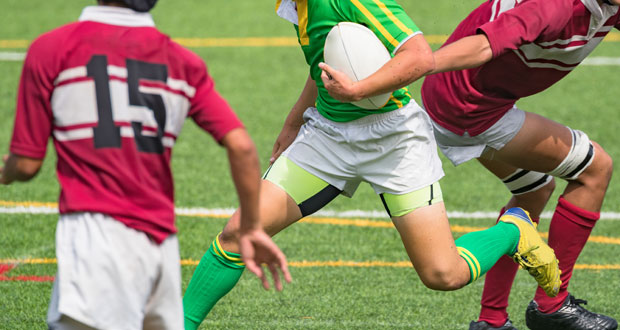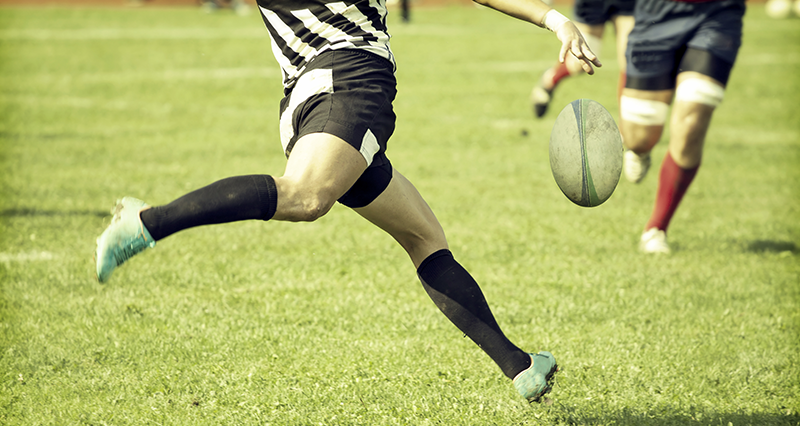Rugby footwork and agility drills demonstrate how to develop skills to sidestep, swerve, spin and offload the ball with the aim of avoiding tackles and keeping the ball moving. By practising the footwork skills repeatedly in isolation or as part of a practice drill then eventually the movements become automatic and emerge naturally in a game situation.
The Sidestep
This drill helps players practice the side step with the use of cones to help get their feet in the right place so eventually, the skill becomes automatic.
Explanation: The sidestep is used to beat a defender by changing direction in an instant.
Description: The ball carrier must decide on the path they wish to attack. Then they need to start angling away from this path to create the space. Keep the ball in both hands, and watch the defender as they execute this move.
Once the ball carrier is ready, they plant the foot furthest from the direction they want to move (left foot if they are sidestepping to the right). At this time their weight should be shifted onto the planted foot.
As soon as the weight is on this leg the ball carrier should drive off it, shift their weight again, and go past the defender on the inside. Accelerate into the open space, and keep an eye out for support.
The Swerve
The swerve is another good way of avoiding a tackle and involves the player trying to confuse the defender by using a cross-overstep. This drill uses cones to aid foot placement.
Explanation: The swerve is most commonly used when a defender is about to make a tackle on the ball carrier, and they have no chance of using the sidestep.
Description: To execute the swerve the ball carrier must first move in close to the defender, and then change direction to take their legs away from the defender’s outstretched arms. If the ball carrier is swerving to the right, they must use the outside of their left boot and the inside of their right boot to help them turn.
As the ball carrier swerves right, they hold the ball in their right hand away from the defender and accelerate into the space. Then look for support or the opportunity to score. Keep an eye on the defender throughout the movement.
The Spin
The spin technique involves the player making contact and then spinning away from the tackle. It is practised using tackle bags that the player must hit before spinning out.
Explanation: The objective of this move is to spin out of a tackle.
Description: The player must keep the ball in two hands at all times to avoid dropping it when going into contact. As the player makes contact they must hit with their shoulder and roll to the side using their momentum to get away from the tackle.
The Spin Progression
This drill progresses the spin technique so players have to spin in both directions making three or more hits in a row. It can also be used as a fitness drill.
Explanation: The objective of this move hit the tackler and spin off the tackle.
Description: The player must keep the ball in two hands at all times to avoid dropping it when going into contact. As the player makes contact they must hit with their shoulder and roll to the side using their momentum to get away from the tackle. The player hitting the tackle should hold the ball as far away from the tackler as they can.
Spin And Offload
This drill practices the spin technique to avoid a tackle with an offload to the next player who then spins out of a tackle pad to offload.
Explanation: The objective of this move hit the tackler, spin off the tackle and then offload to the next supporting player.
Description: The player must keep the ball in two hands at all times to avoid dropping it when going into contact. As the player makes contact they must hit with their shoulder and roll to the side using their momentum to get away from the tackle. They must then offload to the support player who should come from the depth and at pace.




